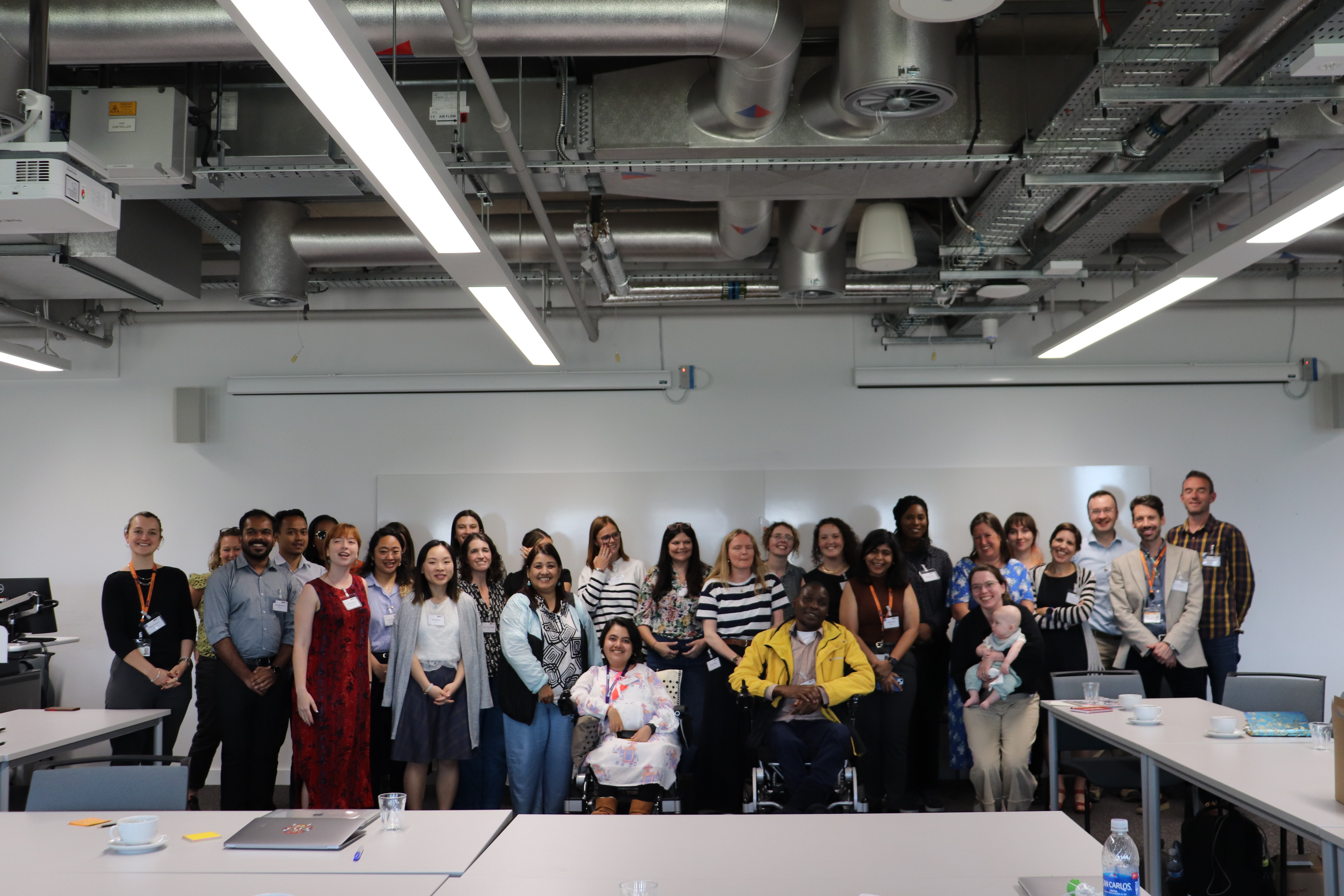Blog Posts
-

More Than Games: Why Sport Must Matter in the Assistive Technology Agenda
Loughborough UniversityOct. 8, 2025From policy forums to playing fields, the Region 5 Youth Games exposed a persistent gap: if sport is left out of assistive technology systems—and AT left out of sport—then inclusion remains incomplete. This blog explores the relationship between AT and sport, and why it matters for inclusion.
-

Inclusive Climate Infrastructure: Turning Dialogue into Action – Climate Action!
Annamae MuldowneyOct. 6, 2025GlobalInclusive climate infrastructure means that the systems we build to adapt to climate change (energy, transport, green and blue spaces, communication networks) are planned and managed so that everyone, including people with disabilities, can use and benefit from them. It is not an add-on or a specialist track of climate action. It is about anticipating diverse needs from the outset and co-creating solutions with those most at risk.
-
IncluCity: Inclusive Cities Pilot to be launched in Addis Ababa
Shivani GuptaOct. 1, 2025EthiopiaThe Inclusive Design team at the GDI HUB is preparing to launch the first Inclusive City Pilot in Addis Ababa, Ethiopia, in collaboration with the UK Foreign, Commonwealth & Development Office (FCDO) and the RICH initiative by the Global Disability Fund. The pilot will build on our Global Action Report, which is the result of four years of research across six cities on three continents. It will test the implementation of the research findings and adapt the global learnings to local contexts.
-
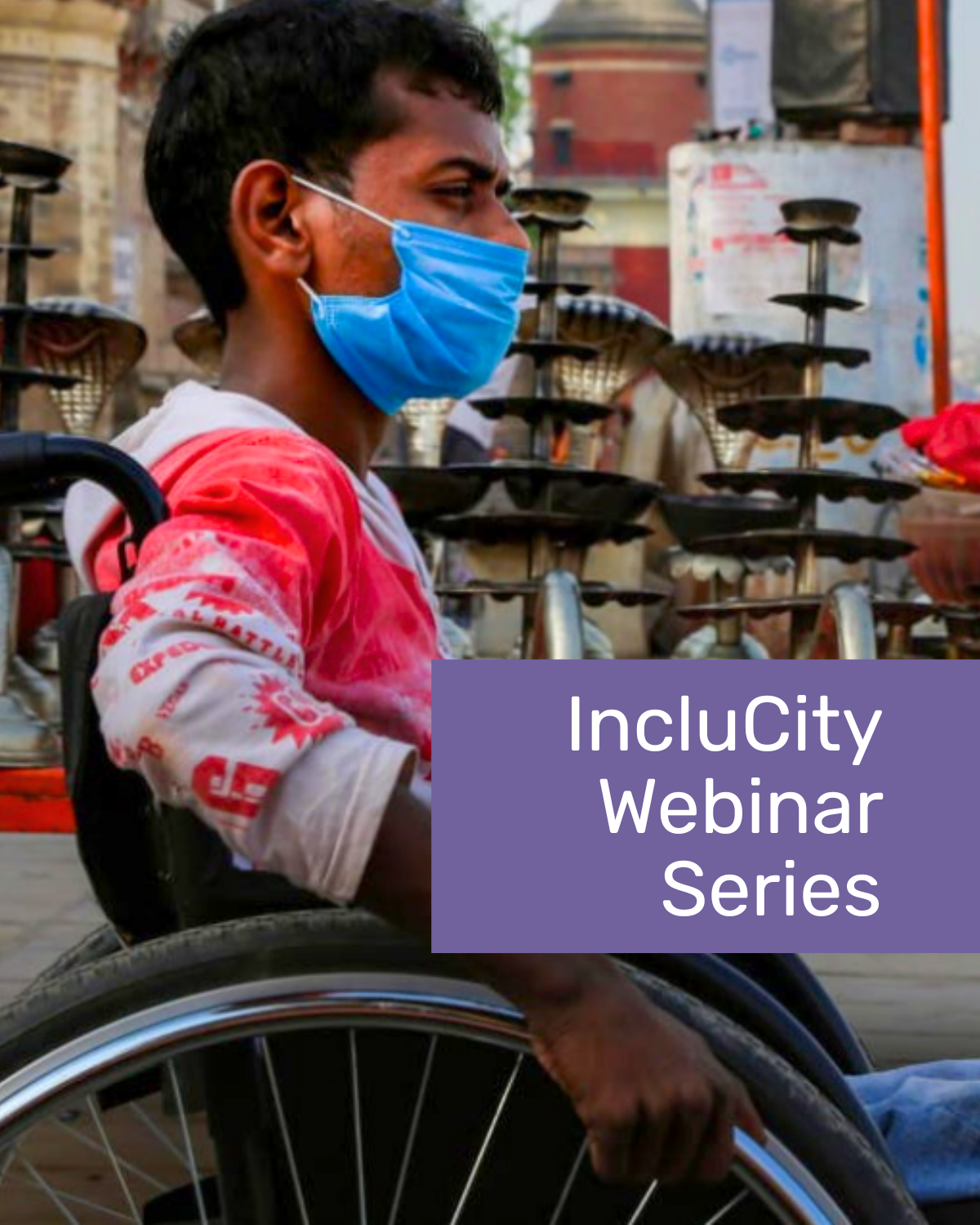
IncluCITY Webinar Series
Sophie GlickmanAug. 15, 2025By 2050, 70% of the world’s population will live in cities, amplifying challenges such as climate impacts, informal settlements, and barriers to essential services for people with disabilities. To address these issues, the Global Disability Innovation Hub (GDI Hub) launched the IncluCITY webinar series, convening experts and community leaders to share practical, real-world strategies for building inclusive urban environments, drawing on insights from its Delivering Inclusive Design in Cities: A Global Action Report.
-
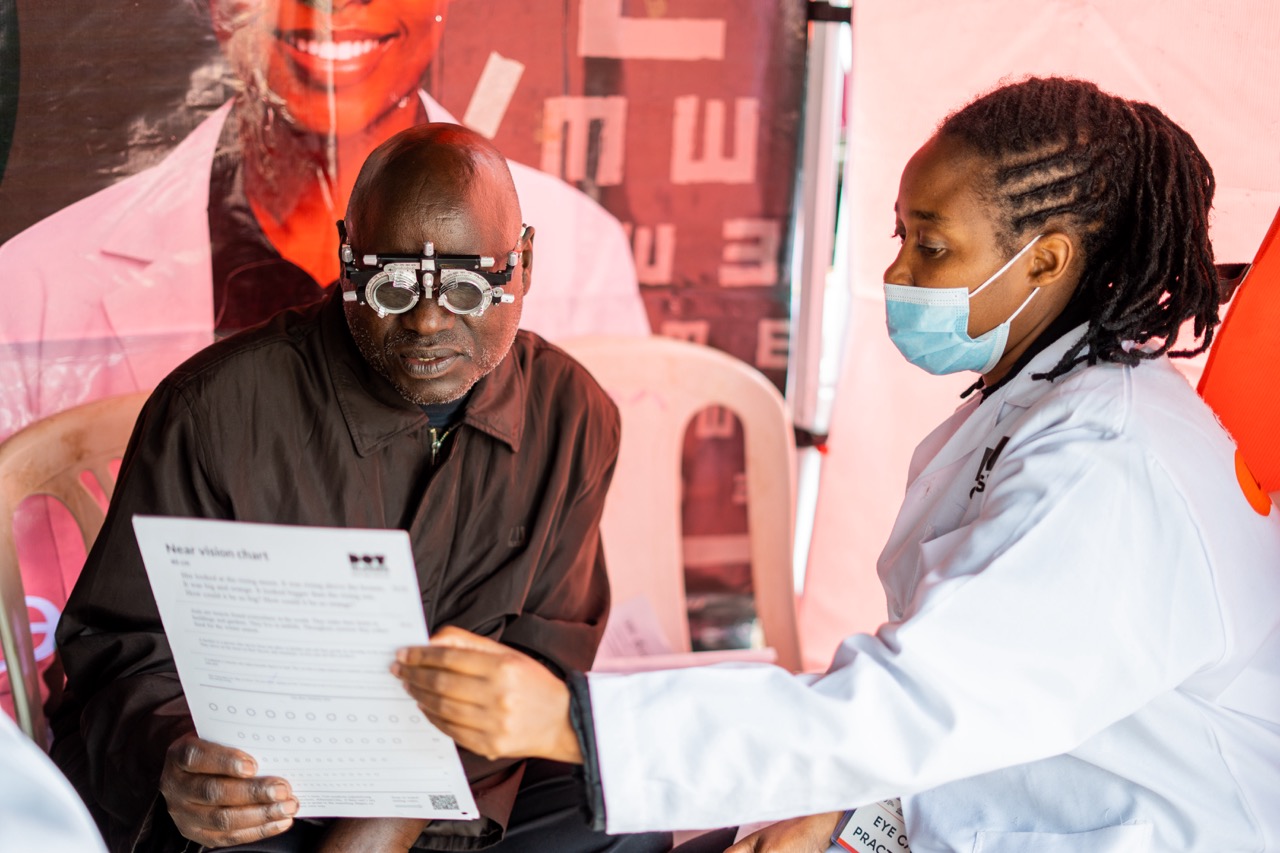
New Study Aims to Transform Eye Care Accessibility in Kenya and Beyond.
Harrison KamauAug. 8, 2025KenyaA new research study is underway to evaluate an innovative, low-cost eyeglass distribution model that could significantly expand access to vision care in underserved communities across Kenya and beyond. This study conducted in collaboration with Dot Glasses is part of the UK International Development-funded #AT2030Programme, delivered in partnership with Senses Hub. It aims to generate critical academic evidence to support the long-term scalability and sustainability of the Dot Glasses model.
-
Co-Creating Disability-Inclusive Climate Solutions
Bala Nagendran, Aishwarya SoniJuly 30, 2025We at the Global Disability Innovation Hub (GDI Hub) hosted a full-day in-person roundtable event on Monday, 23 June 2025 at University College London, Marshgate Campus, during the London Climate Action Week. The event was planned as part of our research project titled “Disability-inclusive Solutions for the Climate Crisis: Leveraging Urban, Infrastructure, and Assistive Technology Research” in partnership with the Bartlett Development Planning Unit, funded by the UK International Development (AT2030 Programme) and UCL Grand Challenges.
-
IncluCITY 4: Climate resilience and innovation for inclusive cities
Bala NagendranJuly 22, 2025GlobalIn this fourth webinar, we will be focusing on climate resilience and innovation for inclusive cities. This project focuses on the need and opportunities for disability inclusion within the climate adaptation, mitigation, resilience, and innovation narratives and actions. It situates inclusive cities within the larger just transition ambition
-

An Inclusive City is a Resilient City: A Case for Simultaneously Localising Disability Inclusion and Climate Resilience
Bala NagendranJuly 10, 2025GlobalAn inclusive city is also a resilient city. It is necessary to break the silos between sectors and ensure inclusion and resilience are designed hand-in-hand (GDI Hub, 2024).” The four-year inclusive cities research conducted by GDI Hub across six global cities has informed us that a city co-designed with all urban residents and stakeholders, including people with disabilities, will adapt and evolve with long-term resilience. From this context, GDI Hub adopts climate resilience and innovation as integral components for building inclusive cities and are exploring pathways to simultaneously implement inclusive design and climate action at the local level.
-

Making Urban Services Inclusive: Voices from the IncluCITY Webinar Series
Harrison KamauJuly 7, 2025In a world where cities are rapidly expanding, the question of who gets to fully participate in urban life is more urgent than ever. For persons with disabilities, access to essential services—such as healthcare, transport, education, and sanitation—remains a daily challenge. The third webinar in the IncluCITY series, hosted by the Global Disability Innovation Hub (GDI Hub), tackled this issue with clarity and conviction. Titled “Making Services Inclusive,” the session brought together global experts, advocates, and individuals with lived experience to explore how cities can be designed to serve everyone.
-

Restoring Dignity: Crafting Inclusive Humanitarian Support in the Asia-Pacific
Dr Dilisha Patel, Nisanart Yeamkhong, Roos MiddlekoopJune 30, 2025GlobalThe Asia-Pacific faces increasingly frequent and severe humanitarian crises. During these emergencies, women and girls, especially those with disabilities, are among the most vulnerable. Disasters force them to (over)crowded shelters that are often not easily accessible, nor safe. Many women and girls experience gender-based violence (GBV) and often cannot access lifesaving health and protection services. Persons with disabilities also face discrimination and mobility issues that impact other areas (e.g. managing menstrual health in small or inaccessible washrooms), compromising their dignity and physical and mental wellbeing.
-
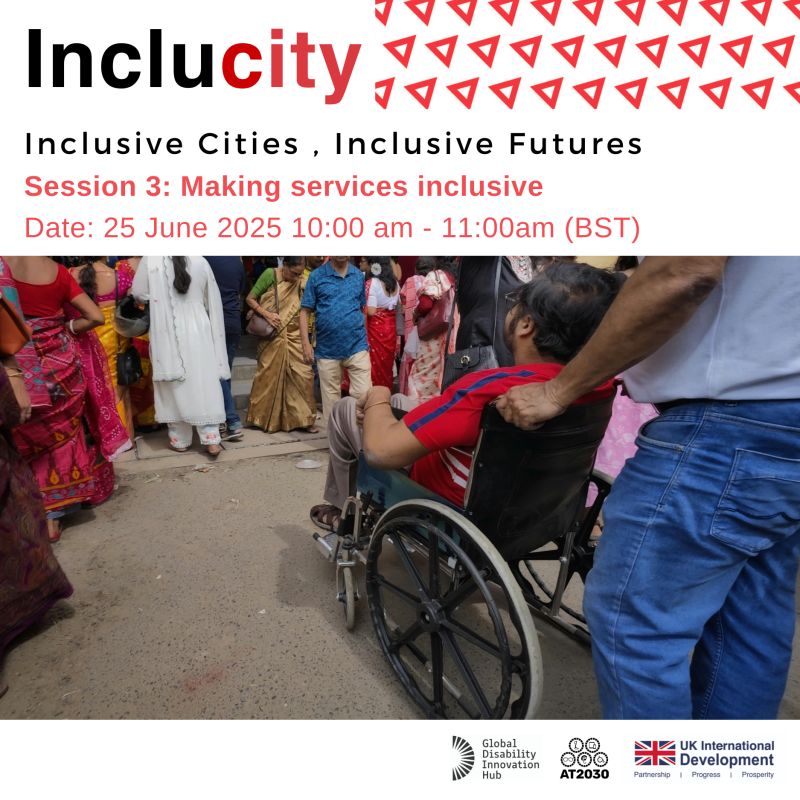
Inclusive services: a cornerstone for inclusive cities
Shivani Gupta, Annamae Muldowney, Bala NagendranJune 23, 2025GlobalAs cities evolve, so too must the services that sustain them. From healthcare and education to transport and sanitation, urban services form the lifeblood of everyday life. While making the physical environment accessible in the city is critical, so is ensuring that all basic services are responsive to the needs of persons with disabilities to enable them to function independently (CRPD 2006). For instance, while a court may be completely accessible, unless specific steps are taken to make the proceedings accessible to persons with disabilities, it would not be inclusive. This may include having a sign language interpreter available if a deaf person seeks legislative services or the legal document in accessible formats. However, in reality, services remain fragmented, inaccessible, or out of reach for most persons with disabilities. This challenge is explored in the third webinar IncluCity series: Making Services Inclusive.
-
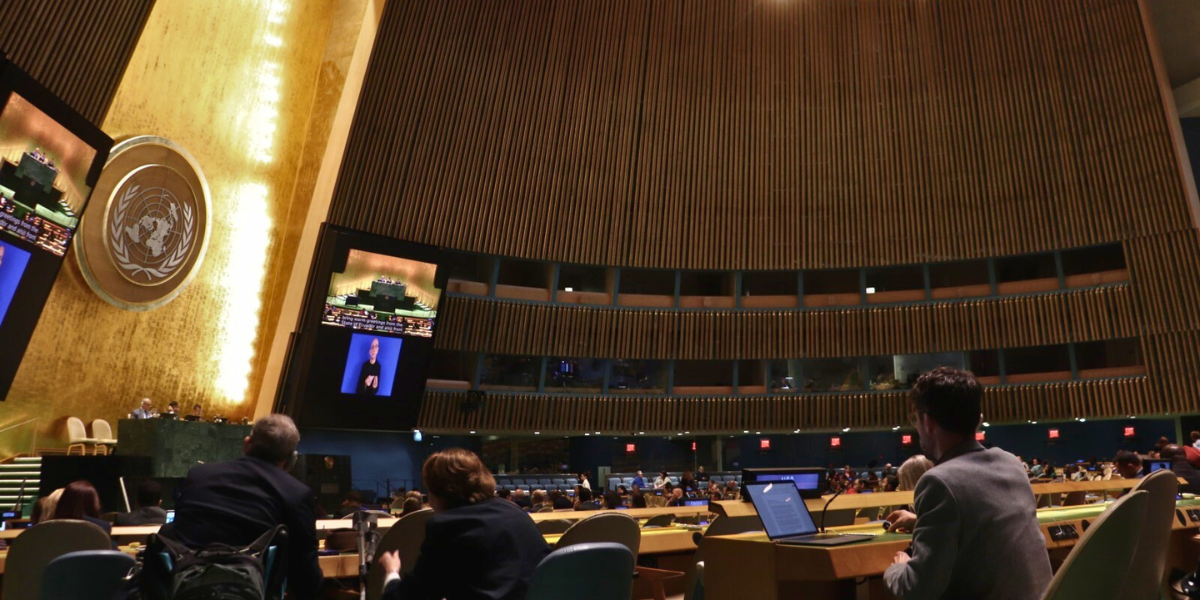
Reflections from COSP18
Sophie GlickmanJune 19, 2025Last week, the Global Disability Innovation Hub (GDI Hub) joined governments, civil society organisations, organisations of persons with disabilities (OPD), researchers, and private sector partners at the United Nations Headquarters in New York for the 18th Session of the Conference of States Parties to the Convention on the Rights of Persons with Disabilities (COSP18).
-

Landmark Gathering to Accelerate Assistive Technology Innovation Across Africa
Harrison KamauJune 13, 2025KenyaAt the sidelines of Inclusove Africa conference, a new era for Africa’s assistive technology (AT) ecosystem began began at the “Accelerating Impact: Shaping the Next Wave of Assistive Technology Innovation in Africa
-
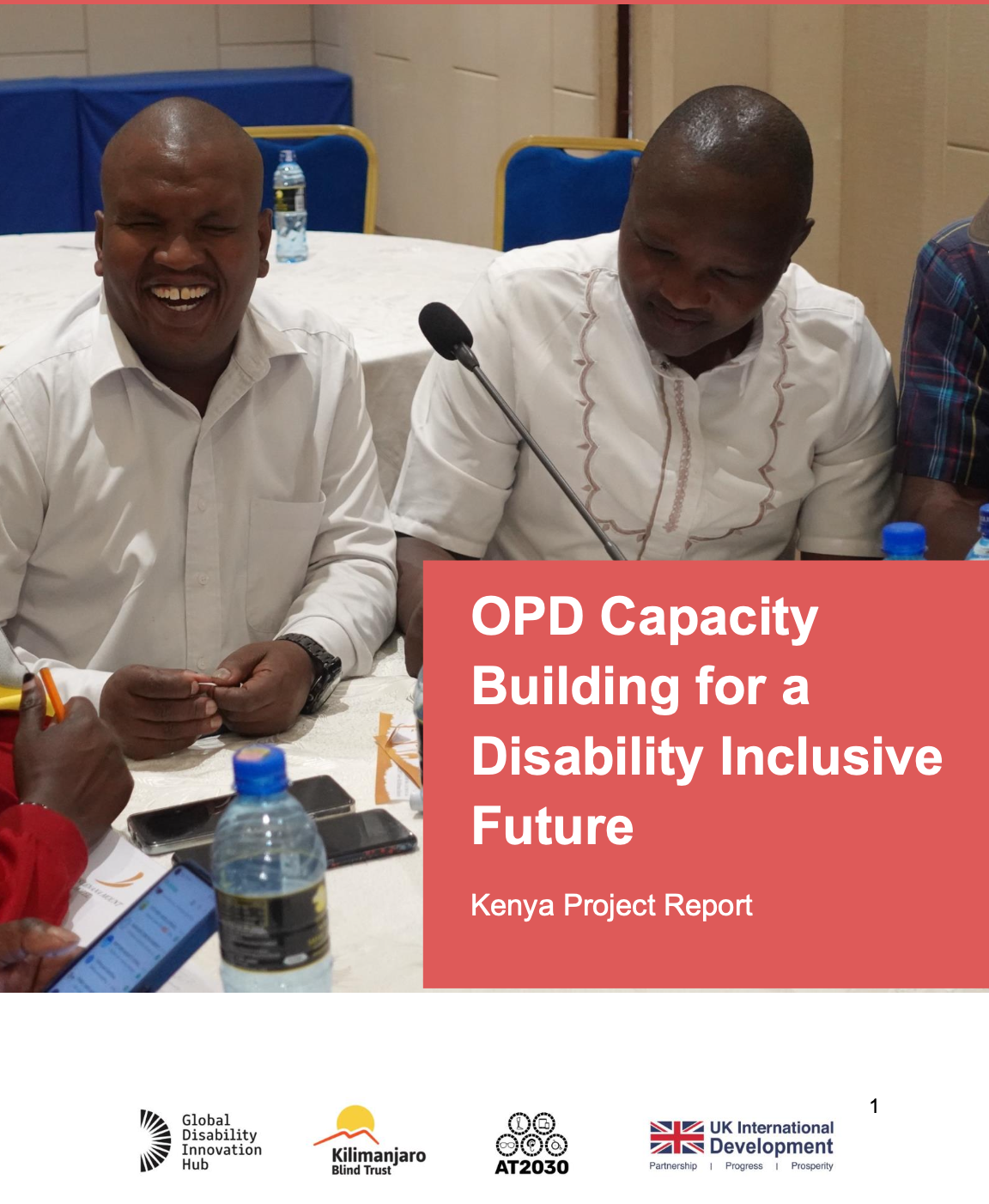
Empowering OPDs to Lead Change
Harrison KamauJune 3, 2025KenyaCase Studies and ReportsAs part of the Global Disability Innovation Hub’s UK aid-funded AT2030 programme, a regional initiative has been rolled out to deepen understanding of OPD needs and priorities in Kenya and Pakistan. In Kenya, this work is led by Kilimanjaro Blind Trust Africa (KBTA), and in Pakistan, by the Special Talent Exchange Program (STEP). These efforts fall under the “Include” cluster of AT2030, focusing on leadership and engagement to drive systemic change.
-
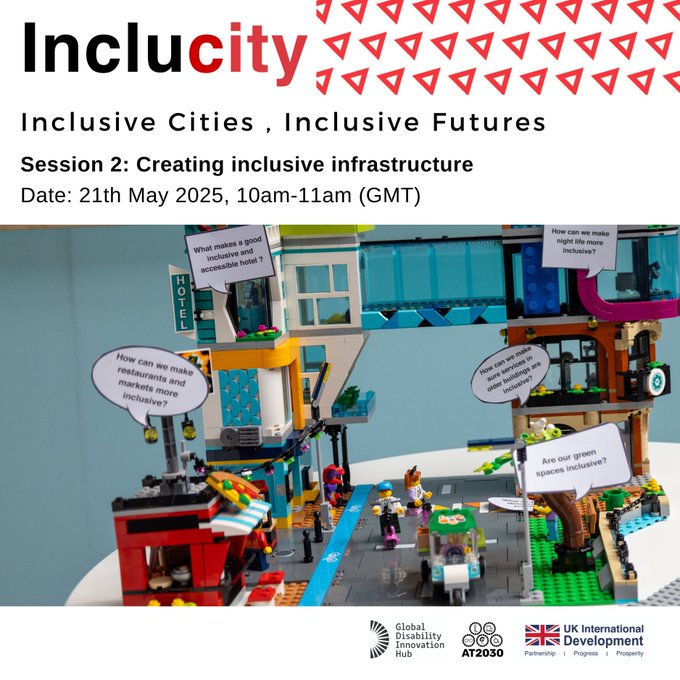
Webinar 2: Creating Inclusive Infrastructure
Bala NagendranMay 30, 2025GlobalWe look back at the second session—Creating Inclusive Infrastructure of the four-part series reinforced this message from the lens of making everyday spaces truly inclusive. Annamae Muldowney from GDI Hub’s Inclusive Design team situated the discussion, drawing insights from both the Global Comparison Report and Global Action Report.
-

IncluCity: Webinar 1: Global Insights to Local Action
Annamae MuldowneyApril 23, 2025The first session in our new IncluCity webinar series – Global Insights to Local Action – set the tone for what will be an ongoing dialogue between research, local expertise, and lived experience. Designed to unpack the findings of our Global Action Report, this series brings together key voices from around the world to explore how cities can transform themselves into more accessible and inclusive spaces for all.
-

GDI Hub's Contribution at CPD58: Advancing Gender-Inclusive Assistive Technology
Global Disability Innovation HubApril 16, 2025At the United Nations Headquarters in New York, during the Commission on Population and Development's Fifty-Eighth Session (CPD58), the GDI Hub participated in a side event focused on health, well-being, and inclusion through equitable access to assistive technology (AT), hosted by WHO and alongside the Foreign, Commonwealth and Development Office, the International Society of Prosthetics and Orthotics, UNICEF and the National Senior Citizens Centre. This blog explores what was discussed at the event, why it matters, and how the GDI Hub is helping drive change in this space.
-

From Global Insight to Local Action
Shivani GuptaApril 14, 2025This blog presents the global insights gathered from four years of research undertaken by the Global Disability Innovation Hub, funded by UK International Development under the AT2030 programme. The overarching research question was, ‘What is the current state of inclusive and accessible environments and infrastructure in lower-and-middle-income countries (LMICs), and what is the role of inclusive design in creating an enabling environment for persons with disabilities?’
-

Can The Commercial Be Political?
Jennie Wong, Dr. Jessica Noske Turner (LU London)March 31, 2025In the world of sports, the blending of social change with commercial interests has always been a complex dance. In our current project, Para Sport Against Stigma (PSAS), we navigated this grey zone between social change and commercial interests, striving to use the platform of Para sports to drive disability inclusion in Sub-Saharan Africa while grappling with the realities of commercial pressures. The question that lingers throughout the project is, can the commercial ever truly be political?
-
Beyond the Track
Harrison KamauMarch 31, 2025FranceWith Paris 2024 still fresh in our memories and the road to Los Angeles 2028 ahead, we asked leaders from the Global Disability Innovation Hub and key figures across the disability movement on what the Paralympics means to them. Their answers show how the Games influence everything from city planning to space exploration.
Next Page
